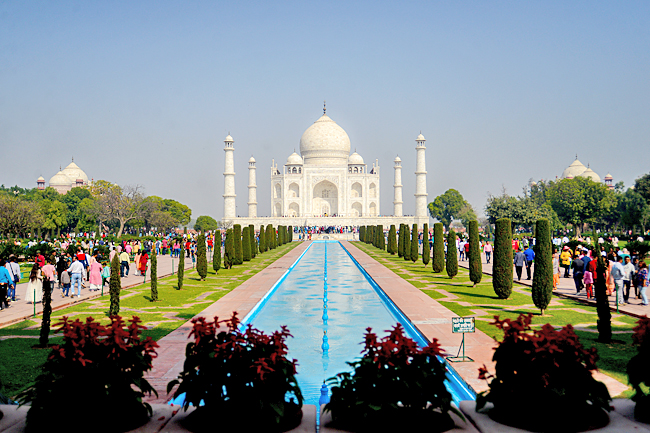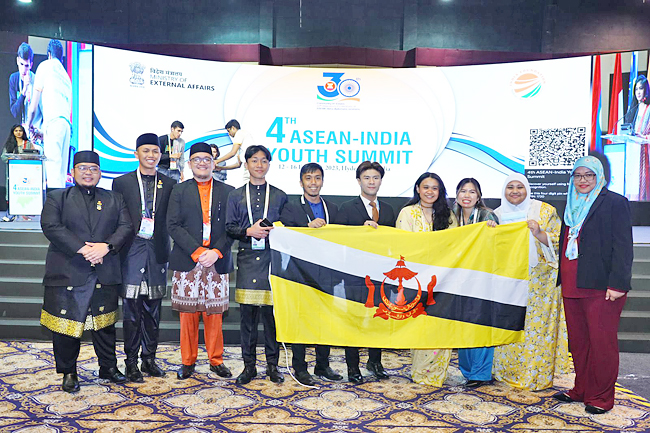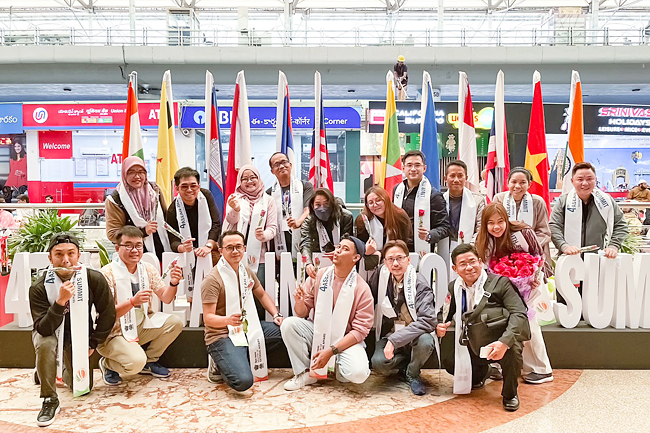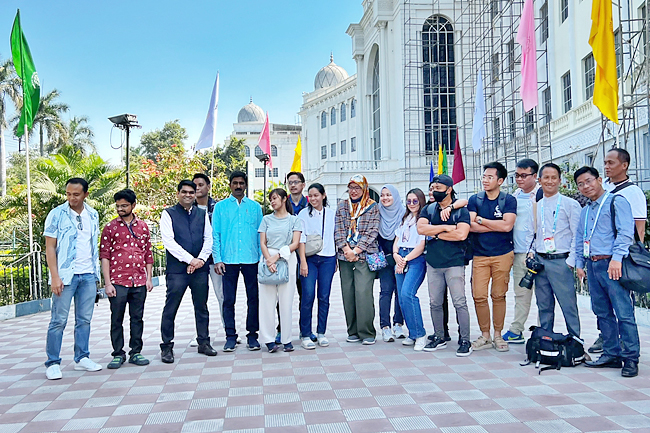Rokiah Mahmud
The ASEAN-India Media Exchange Programme from February 9 to 15 provided an array of opportunities, not only in terms of understanding the beautiful country from a personal perspective, but also in providing broad experience sharing and best practices conducted in ASEAN member countries and India.
The seven-day programme brought delegates from Brunei Darussalam, Cambodia, Indonesia, Laos, Malaysia, Myanmar, the Philippines, Vietnam, Thailand and representatives from the ASEAN Secretariat to visit two cities in India – New Delhi and Hyderabad.
In New Delhi, participants got insights about the Group of 20 (G20) briefing, which India assumed presidency from December 1, 2022 to November 30, 2023. On the same day, delegates also were brought to take a closer look and were briefed on India’s economy with the Confederation of Indian Industry (CII). CII works to create and sustain an environment conducive to the development of India, partnering industry, government and civil society, through advisory and consultative process. The delegates from ASEAN member countries also visited one of the Seven Wonders of the World, the Taj Mahal, located in Agra, which was a journey of about four hours from New Delhi.
The opportunity in learning about the history, understanding how the Taj Mahal was constructed, the love story between Shah Jahan and Mumtaz Mahal, the wonders of how the symbol of love was constructed and many more, left the delegates mesmerised and amazed with the creation. With access to see up-close the mausoleum of Shah Jahan and Mumtaz Mahal served an eye opener that the Taj Mahal is reflected as not only one of the most recognisable structures in the world, but it is also one of the most beautiful buildings ever constructed and stands as a symbol of eternal love.
The Taj Mahal was built by Mughal emperor, Shah Jahan in memory of his third wife, Mumtaz Mahal, and also serves as the finest example of Mughal architecture, a style that combines elements from Persian, Islamic and Indian architecture.




As one of the Seven Wonders of the World, the Taj Mahal was recognised by the United Nations Educational, Scientific and Cultural Organization (UNESCO) as a World Heritage Site in 1983. Another opportunity that the delegates acquired was being part of the 4th ASEAN-India Youth Summit.
The summit was held in Hyderabad and joined by over 170 participants comprising ASEAN member countries as well as representatives from India.
With the theme ‘Strengthening ASEAN-India Partnership in the Indo-Pacific’, Brunei Darussalam was represented by five selected youth – Muhammad Alif Mursidi, Muhammad Syazwan Asnawi Rosman, Muhammad Waie Al-Syaffiq bin Muhammad Shafiee, Muhammad Zahirul Aniq bin Supri, Nur Zahirah binti Mohd Sufian, Amar Syahirah binti Haji Abdul Murad.
Also present during the summit was Second Secretary of Brunei Darussalam High Commission in New Delhi, India, Awangku Md Syafi Alwaly bin Pengiran Abu Bakar.
While in Hyderabad, the ASEAN-India Media Exchange Programme delegates were brought to the Salar Jung Museum, which is also known as the “one-man collection museum’’ displaying thousands of art objects, manuscripts and printed books of which the collections cross from 2nd Century BC to the early 20th Century.
Another memorable experience was when the delegates visited the Ramoji Film City. Set up by the Ramoji Group in 1996, Ramoji Film City serves as a land of a million dreams, where comprehensive and world-class filmmaking facilities await dream merchants for a motion picture journey. It has also been certified by the Guinness World Records as the world’s largest film studio complex, allowing a filmmaker to walk in with a script and walk out with a film.
Numerous films in Hindi, Tamil, Telugu, Malayalam, Kannada, Gujarati, Bengali, Oriya, Bhojpuri and English as well as several other television commercials and serials are produced there every year. Approximately 1.5 million tourists visit the Ramoji Film City every year to enjoy the scenery and take the opportunity to enjoy a section of a movie set and props.
Among the renowned films that have taken Ramoji Film City as their main movie scene location were Bahubali: The Beginning and Bahubali: The Conclusion.
Aside from learning about the culture and tradition of India, along with its entertainment business, the media delegates also gained an insight on several significant institutions that have remarkably contributed towards the development of India, including the Bharat Biotech, a leading company in straddling the world of product research and manufacturing to create effective vaccines and therapeutics for patients around the world. The company also produced the COVAXIN that has become the first COVID-19 vaccine in the world to be rolled for children.
The media delegation also visited the National Payments Corporation of India (NPCI), an umbrella organisation for operating retail payments and settlements system in India, as well as the Shilparamam market, an arts and crafts village, concluding the one-week programme.






